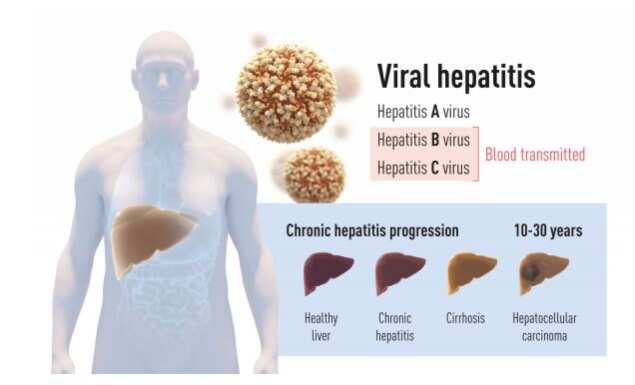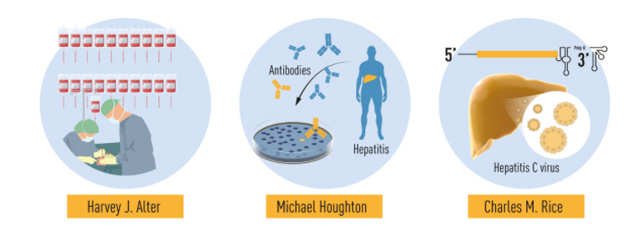
All three were honored for their “decisive contribution to the fight against blood-borne hepatitis, a major global health problem that causes cirrhosis and liver cancer in people around the world,” the Nobel jury said. The trio will share the Nobel Prize sum of 10 million Swedish crowns (about $ 1.1 million, 950,000 euros).
They would normally receive their award from King Charles XVI Gustav in a formal ceremony in Stockholm on December 10, but the in-person ceremony was canceled this year due to the coronavirus pandemic. The winners received their awards in their home countries.
Why Nobel is awarded for the discovery of the hepatitis C virus
The World Health Organization (WHO) estimates that there are around 70 million hepatitis C infections worldwide, leading to around 400,000 deaths each year.
Thanks to the discovery made by the trio of scientists, highly sensitive blood tests are now available for the virus that have “essentially eliminated post-transfusion hepatitis in many parts of the world, vastly improving global health,” the Nobel committee said.
Their discovery also enabled the rapid development of antiviral drugs targeting hepatitis C.

There are two main forms of hepatitis. One form is an acute illness caused by the hepatitis A virus that is spread through contaminated food or water. The other form is caused by the hepatitis B virus or the hepatitis C virus (this year’s Nobel Prize winner). (Courtesy: www.nobelprize.org)
“For the first time in history, the disease can now be cured, raising hopes of eradicating the hepatitis C virus from the world’s population,” the jury said.
Before the trio’s work, the discovery of the hepatitis A and B viruses had taken critical steps forward, but most cases of blood-borne hepatitis remained unexplained.
“The discovery of the hepatitis C virus revealed the cause of the remaining cases of chronic hepatitis and made possible blood tests and new drugs that have saved millions of lives,” the jury said.
How did the three scientists contribute to the discovery?
In the 1960s, Baruch Blumberg determined that a blood-borne form of hepatitis was caused by a virus that became known as the hepatitis B virus, and the discovery led to the development of diagnostic tests and an effective vaccine. Blumberg received the Nobel Prize in Medicine in 1976.

Summary of the discoveries awarded by this year’s Nobel Prize. (Courtesy: www.nobelprize.org)
At the time, Harvey J. Alter of the U.S. National Institutes of Health, who was studying the occurrence of hepatitis in patients who had received blood transfusions, demonstrated that the blood of these hepatitis patients could transmit the disease to chimpanzees. Alter’s methodical investigations defined a new and distinct form of chronic viral hepatitis that was neither Hepatitis A nor B.
Michael Houghton, who worked for the pharmaceutical company Chiron, isolated the genetic sequence of the virus, then cloned fragments of viral DNA that encoded viral proteins, and identified the hepatitis C virus.
Based on the discoveries made so far, Charles M. Rice, a researcher at Washington University in St. Louis, who was working with RNA viruses, noted a previously uncharacterized region at the end of the hepatitis C virus genome. Later, Rice completed the puzzle using genetic engineering to show that it was only a new strain, hepatitis C, that was causing patients to fall ill.
(With inputs from agencies)
.